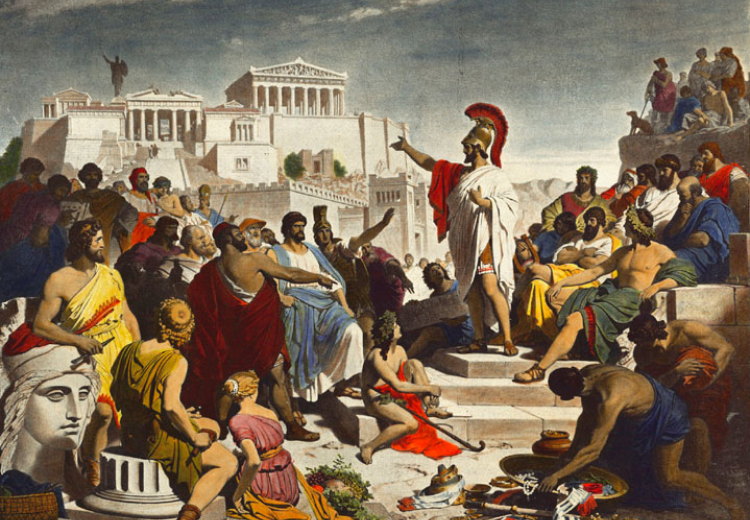Lesson One. The Omnipotence of the Majority

Nineteenth-century painting by Philipp Foltz depicting the Athenian politician Pericles delivering his famous funeral oration in front of the Assembly.
In this lesson, students are introduced to Tocqueville’s argument about the “omnipotent” power of the majority in America and its consequences. After an initial statement that the “very essence” of democracy is majority rule, he contrasts the means by which state constitutions artificially increase the power of the majority with the U.S. Constitution, which checks that power. After this, he turns to identify and consider the two main arguments for the “moral dominion of the majority.”
Tocqueville concludes with a surprising restatement of his main point and a warning about the dangers of this absolute power. This warning will be taken up and elaborated in the subsequent lessons on the tyranny of the majority.
This lesson is one part of a three lesson unit on Democracy in America. The three lessons may be taught in sequence, or each lesson can stand on its own. Teachers may link to the full unit with Guiding Questions, College and Career Readiness standards and Background. Lesson 1 aligns with CCSS.ELA-Literacy.CCRA.R.5
Guiding Questions
How does a tyranny of the majority arise?
Learning Objectives
Compare state constitutions with the U.S. Constitution.
Evaluate the concept of a tyranny of the majority within the context of a constitutional democracy.
